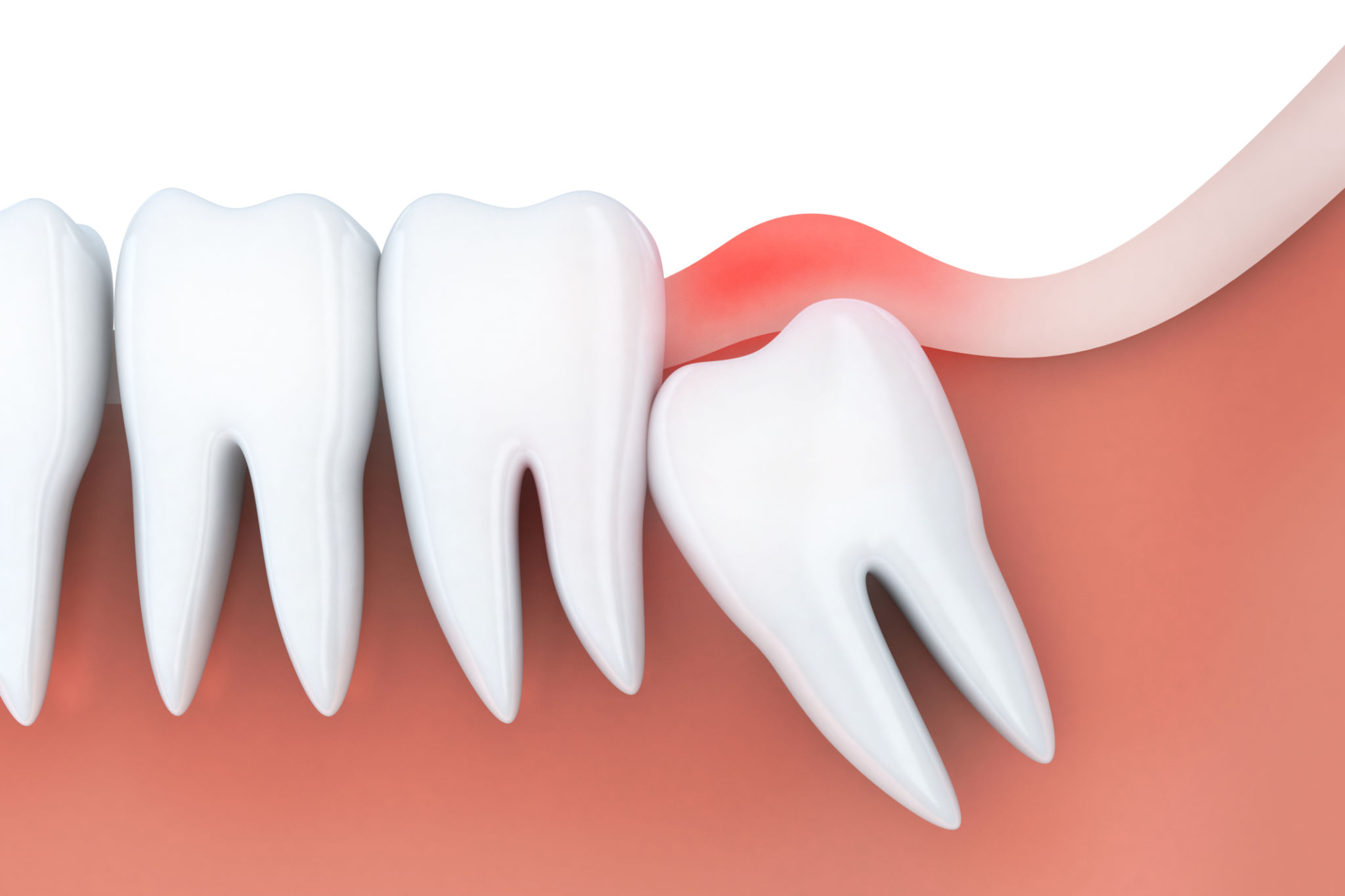
17 May WISDOM TOOTH ANATOMY, MORPHOLOGY, AND FEATURES

The maxillary and mandibular 3rd molars are the last teeth to erupt into the oral cavity at around 17 to 21 years of age. Since they erupt late in life, they are also commonly referred to as wisdom teeth. A tooth is divided between crown and root. The crown is the visible part when a wisdom tooth has fully erupted while the root is buried beneath the gums. Although a crown is commonly partially visible only or both crown and root are usually invisible in the case when the tooth is impacted and restrained within the gum and bone.
Crown
The crown of the wisdom tooth is categorized in all its aspects.
Buccal Aspect
- The mesiobuccal and distobuccal cusps are seen from the buccal aspect. When compared to the maxillary 2nd molar, the crown is shorter in length and narrower in its mesiodistal width. The distobuccal cusp is much smaller than the mesiobuccal cusp.
- The cervical line is irregular without much curvature.
- Buccal developmental groove is seen separating the two buccal cusps
Lingual Aspect
- The mesiolingual cusp occupies most of the lingual aspect of the crown and thus, there is no lingual developmental groove.
- Sometimes a small distolingual cusp may be present.
- The lingual surface is spheroidal
Mesial and Distal Aspects
- The distal surface is shorter and narrower than the mesial surface
- The cervical line on proximal surfaces is rather straight.
Occlusal Aspect
From the occlusal view, the tooth generally resembles the heart-shaped type of maxillary permanent 2nd molar.
- Geometric shape: The occlusal aspect has a heart-shaped outline formed by the three major cusps, namely mesiobuccal, distobuccal and mesiolingual
- Relative Dimensions
- The buccolingual dimension is greater than the mesiodistal dimension.
- The crown is larger buccally than lingually.
- Occlusal Features
- The occlusal form can be irregular with small tubercles and multiple supplemental grooves.
- Sometimes the tooth has four cusps and a close resemblance to the maxillary 2nd molar.

Root
- Though maxillary 3rd molars have three roots, they function as a single unit as they are often fused.
- The fused roots may show division in the apical end.
- The roots collectively bend in a distal direction.

VARIATIONS
- The Crown and root of the tooth can be well-formed resembling maxillary 2nd molar
- Very long or very short roots
- The crown form varies greatly and often sometimes appears like anomalies.
Clinical Considerations
Impacted wisdom teeth occur because of a lack of space, obstruction, or abnormal position
- They may be impacted in the jaw
- They often erupt buccally rather than in line with the dental arch due to shorter space.
- Impacted wisdom teeth can develop various dental diseases and interrupt lifestyle. Such as:
- the asymptomatic or symptomatic inflammatory dental disease (e.g., caries or cavities, acute and chronic periodontal disease, pain);
- Anterior crowding or crooked teeth;
- disruption to regular activities of daily living (e.g., chewing, speaking, and missing work or education);
- days of disability;
- oral health profile;
- damage to adjacent teeth or restorations due to the state of impaction;
- maxillofacial lesions (e.g., odontogenic cysts or tumors);
- facial cellulitis of odontogenic origin;
- need for future treatment (e.g., extraction) of initially asymptomatic wisdom teeth

Conclusion
Although patients don’t necessarily need to learn the detailed information about wisdom tooth anatomy, its morphology, and features, it is still very wise to do so. In combination of all the aspects, the buccal, lingual, mesial, distal, and occlusal aspects, the crown’s shape resembles a heart while the teeth have three roots that are usually fused. Removal of wisdom teeth in young individuals is less complicated than in people beyond age 24, as the wisdom teeth roots are not yet fully developed and the bone is less dense. In older people, recovery and healing are slower. Wisdom tooth infection is more prevalent nowadays as the modern diet tends to be softer and sugary. Like the rest of the molars, the third molar has a complicated occlusal surface that is harder to clean and easier for soft, chewy, and sugary products to stick to. Thus, it is very important to follow proper brushing as the technique adjusts to the outline of every tooth.



